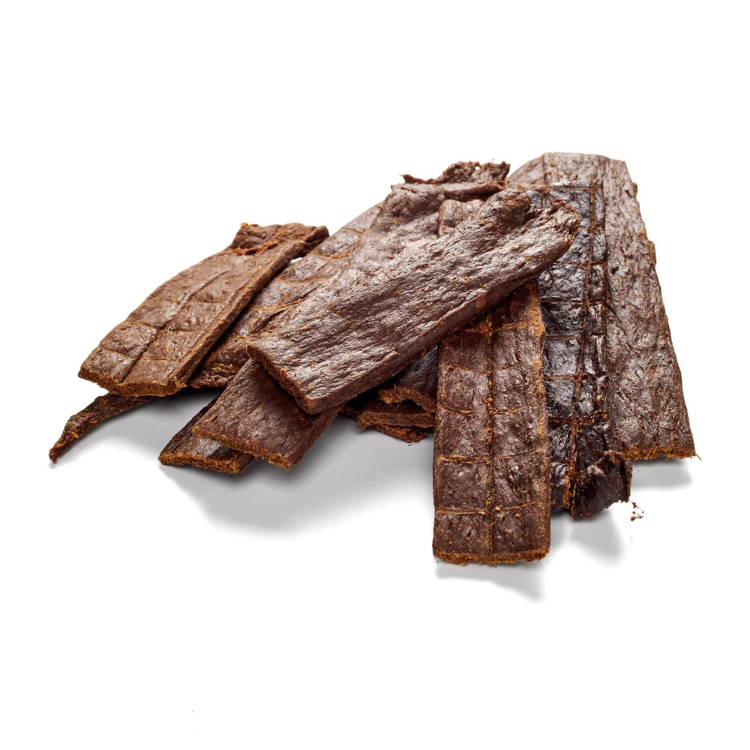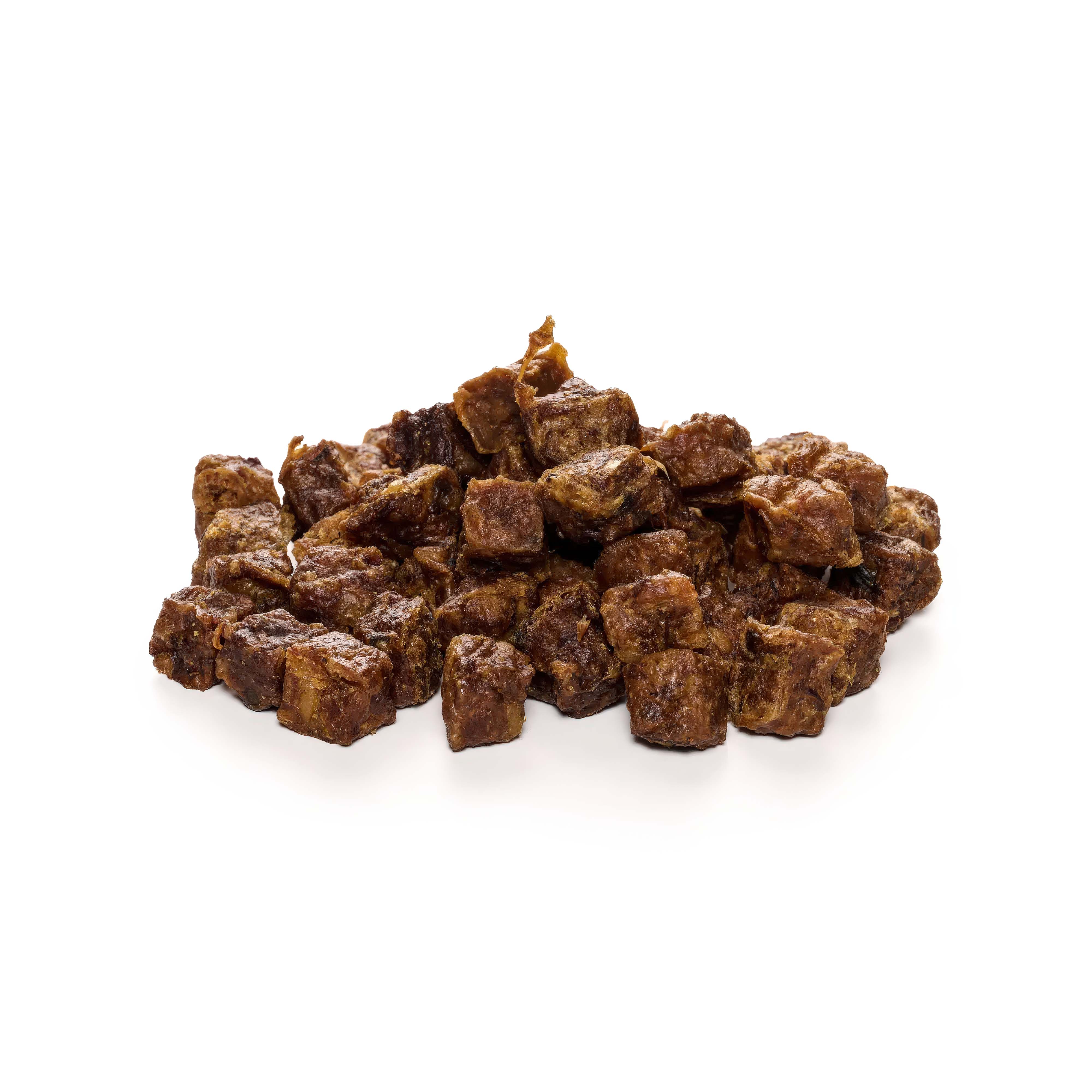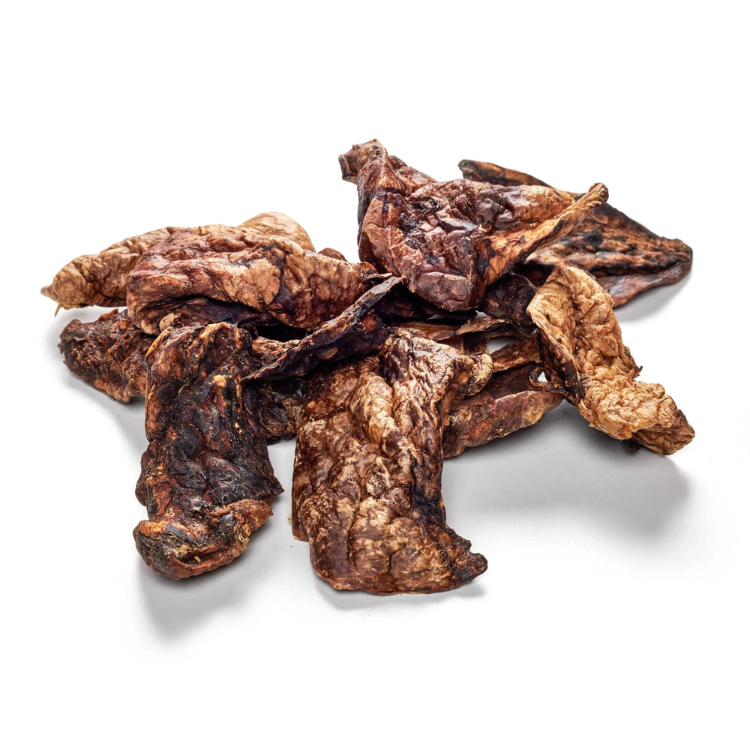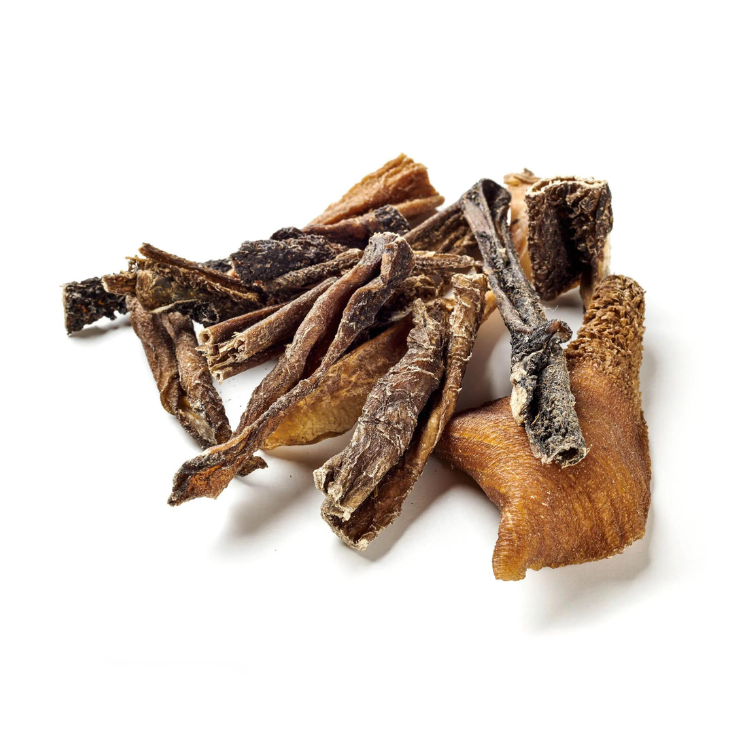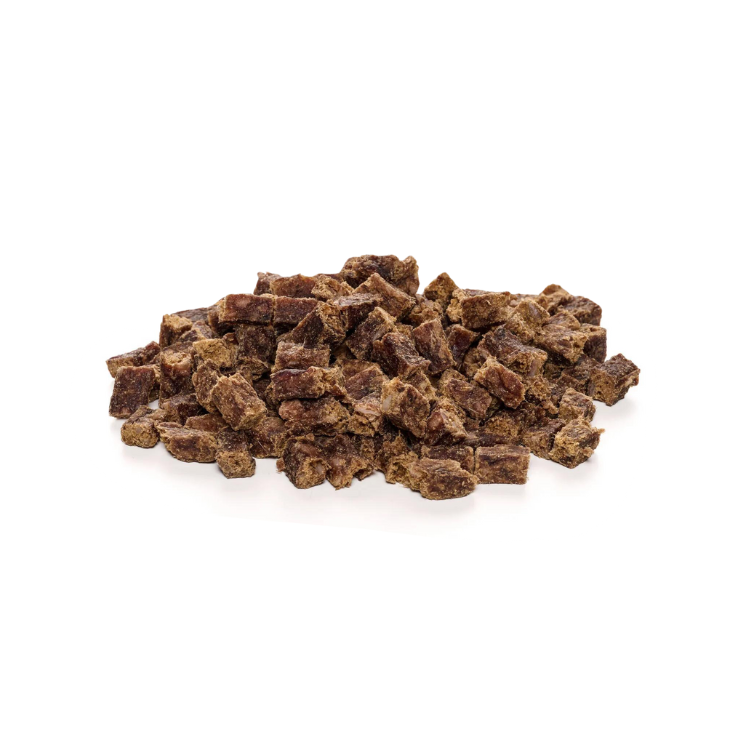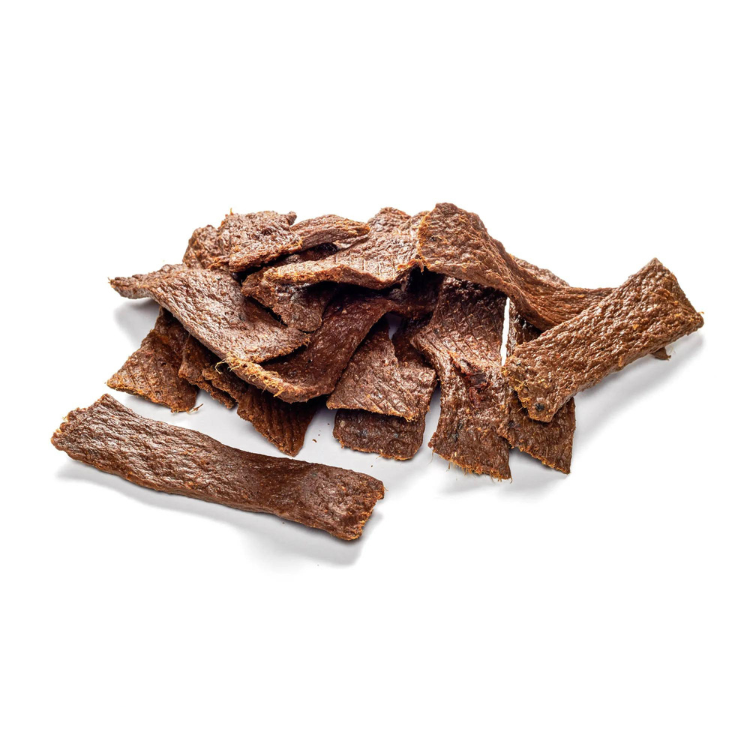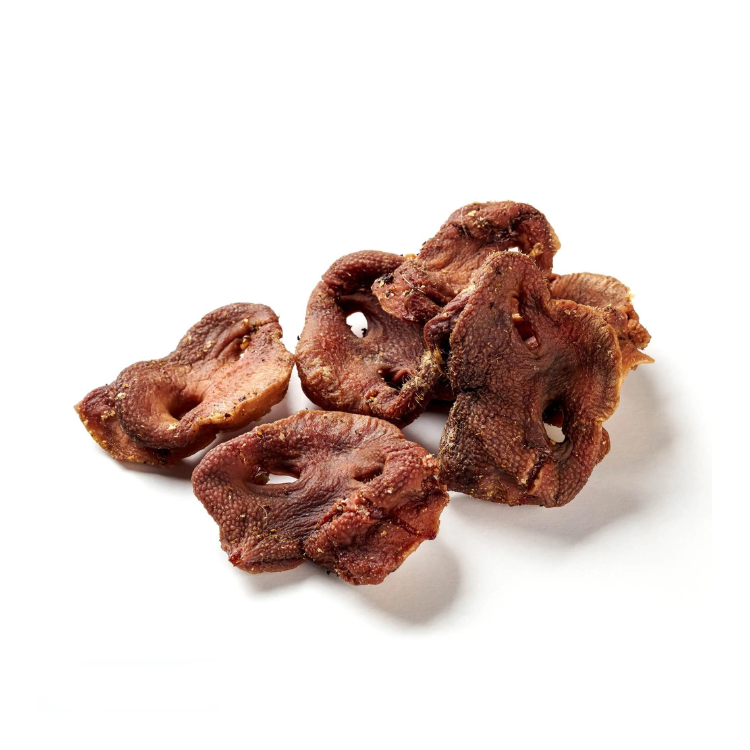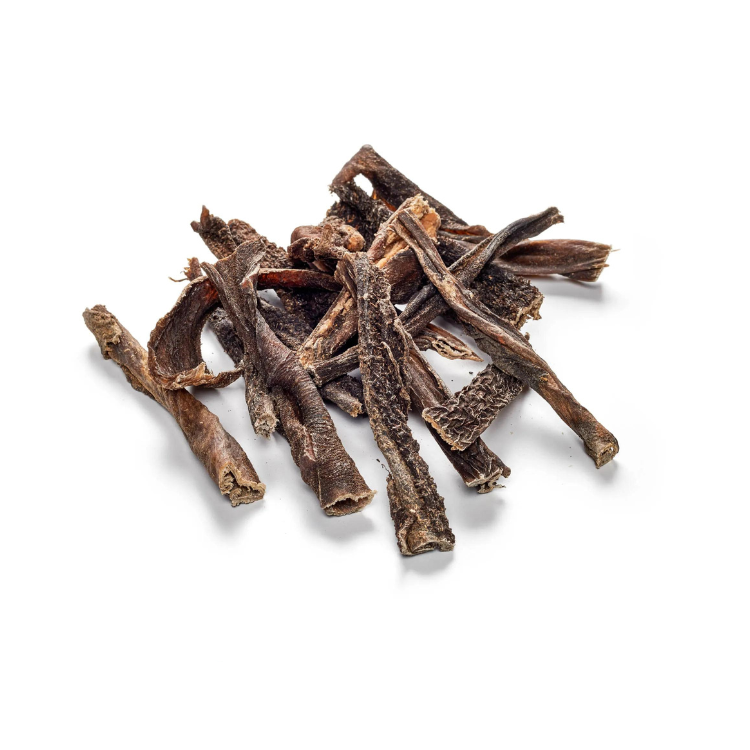
Autumn preparation - How to get your dog fit
Share
Autumn is a special time of year. While many people enjoy the cooler temperatures, dogs face special challenges that require special attention. From cooler temperatures to increasing darkness to wetter weather: Autumn brings changes that our four-legged friends must also adapt to. Good preparation is therefore essential to keep your dog fit and healthy during this season. With the right measures, autumn walks and activities together can continue to be a lot of fun - without any health risks.
Content: Autumn preparation - How to get your dog fit
- The importance of autumn preparation
- Nutrition and care in autumn
- Fitness and exercise in autumn
- Health and safety in autumn
- Conclusion
Autumn also means that the habits of both dog and owner need to be reconsidered. What worked in the summer may no longer be able to meet the demands of the cooler season. This is not just about physical fitness , but also about the mental well-being of the dog.
Discover the range of dog snacks in our store!
The importance of autumn preparation
Autumn not only brings with it colorful landscapes, but also a number of challenges that can affect everyday life with a dog. The change to cooler temperatures, wet weather and shorter days can be stressful for dogs and requires targeted preparation.
Why autumn is a particular challenge for dogs
Dogs are often more sensitive to seasonal changes than humans. The falling temperatures mean that the dog needs more energy to maintain its body temperature. At the same time, changes in light conditions and the change to winter time can disrupt the biorhythm. In addition, the damp ground and the cold, wet weather can put strain on the joints and increase susceptibility to illness. All of this makes autumn a time when special attention and care are required to keep the dog fit and healthy.
The change of seasons can also affect a dog's behavior. Some dogs become less active in the fall and need extra motivation to get moving. Others are sensitive to the change in environment and may become more anxious or nervous. Changes in behavior may also mean that the dog has less or no appetite or behaves differently, which is a sign that adjustments to fall need to be monitored more closely.
In addition, the damp and cool weather increases the risk of colds and joint problems, especially in older dogs or those with existing health problems. Targeted preparation can prevent these problems and ensure that the dog remains active and healthy in the autumn.
Nutrition and care in autumn
As the seasons change, so does the dog's need for nutrients and care. Adjusting the diet and providing more intensive care for the coat and skin are crucial to preparing the dog for the challenges of autumn.
Adjustment of feed quantity and composition
In autumn, it may be necessary to adjust the amount of food the dog is fed, as it may need more energy to keep warm. At the same time, care should be taken to ensure that the composition of the food meets the changed needs. An increased proportion of healthy fats can help to provide the dog with the energy it needs, while additional fibre supports digestion. The addition of omega-3 and omega-6 fatty acids can also be beneficial to keep the skin and coat healthy, especially in dry heating air.
When choosing food, it is important to pay attention to high-quality ingredients that provide the dog with sufficient nutrients. Proteins from plant sources can be a good alternative or supplement to animal proteins and help to maintain the dog's energy balance. At the same time, care should be taken to ensure that the food does not contain any unnecessary additives that could stress the dog.
For less active dogs, however, a slight reduction in the amount of food can be useful to avoid obesity . For active dogs, however, the amount of food should be increased slightly to cover the increased energy requirement. Individually adapting the food is therefore an important step in getting the dog healthy and fit through the autumn.
Seasonal treats and nutritional supplements
In autumn, seasonal treats such as pumpkin, sweet potatoes and apples can not only serve as tasty snacks, but also strengthen the dog's immune system with valuable vitamins and minerals. Supplements such as rosehip powder or echinacea offer additional support for the immune system and help prevent typical autumn illnesses. It is important to choose snacks and chews so that they take into account the reduced amount of exercise in the colder season in order to avoid obesity.
These seasonal foods not only improve the dog's well-being but also contribute to its health. Pumpkin, for example, is rich in beta-carotene, which strengthens the immune system, while sweet potatoes serve as an excellent source of vitamins and antioxidants that protect cells. Additional supplements such as linseed oil or salmon oil can keep the coat shiny and the skin healthy.
Dealing with coat change and skin care
Autumn is often the time of shedding , especially when the dog develops a thick winter coat. During this phase, regular brushing is essential to remove loose hair and stimulate the skin. This not only prevents matting, but also supports the coat's natural protective function. At the same time, the skin can become drier in the cooler seasons, especially when heated air is involved. Care products such as special oils or balms can help to keep the skin supple and prevent cracked paws. A bath with a mild dog shampoo can also be useful at this time to remove dirt and dead skin cells.
Shedding can be a stressful time for dogs, as the body invests a lot of energy in producing the new coat. A balanced diet and regular grooming will help ease this phase. Brushing should be done daily or several times a week, depending on the coat type, to remove loose hair and keep the coat healthy.
For dogs with sensitive skin or problems such as dandruff, it can be helpful to use special care products that are tailored to the needs of the skin in autumn. A gentle shampoo that does not dry out the skin and a nourishing balm for the paws can prevent the skin from suffering from the colder weather and dry heating air.
Paw care is especially important in autumn, as wet ground and road salt can irritate the skin of the paws. Regularly applying a suitable balm to the paws can prevent cracks and inflammation and keep the paws supple. An occasional bath with a mild shampoo helps to remove dirt and dead skin cells and ensures a fresh and well-groomed coat.
Pamper your dog with our chew products!
Fitness and exercise in autumn
Even as temperatures drop and the weather becomes more uncomfortable, exercise remains essential for dogs. However, it is important to adapt training to the changing conditions in order to keep the dog fit and healthy.
Adapting training to weather and daylight
With the shorter days and often changeable weather in autumn, training needs to be flexible. Long walks during daylight hours should be used to give the dog enough exercise. In rainy weather or at dusk, shorter, more intensive training sessions can be a good alternative. Care should be taken to ensure that the dog stays warm enough and is dried off well upon return to prevent colds. A dog bathrobe can work wonders here to keep the dog dry and the apartment clean.
Training in autumn requires flexibility as the weather is often unpredictable. Rain, wind and cool temperatures can reduce the motivation for long walks - both for the dog and the owner. Therefore, it is a good idea to plan the walks at times of day when it is still light and dry.
Shorter but more intensive training sessions can be a good way to keep your dog physically and mentally active, even when the weather is bad. Games like fetch or sniffing games that challenge your dog while being fun are ideal for this time of year.
Outdoor activities for cool days
Despite the cooler temperatures, autumn offers many opportunities for exciting outdoor activities. Fetch games, sniffing games or obstacle courses in your own garden or in the park are ideal for mentally and physically exercising your dog. It can also be a good time to explore new routes and enjoy the autumnal nature together. It is important that the dog is clearly visible, especially at dusk. Reflective vests or leashes are a useful addition here.
Despite the cooler weather, the dog should still get enough exercise. Games like fetch or hiding special treats in the leaves offer the dog exciting activities and at the same time promote his fitness. However, you should make sure that your four-legged friend does not eat any mushrooms that are poisonous to dogs or, in the worst case, poison bait !
Exploring new routes can not only provide variety, but also strengthen the bond between dog and owner. Walks through colorful autumn forests or across wide fields offer the dog many new impressions and smells that stimulate his senses and at the same time give him the exercise he needs.
Special attention should be paid to the dog's safety in autumn. As the days get shorter and it gets dark earlier, it is important that the dog is clearly visible. Reflective vests, collars and leashes help to make the dog more visible at dusk and in the dark, reducing the risk of accidents.
Indoor exercises in bad weather
When the weather is bad, there are many ways to keep your dog fit indoors. Small obstacle courses made of furniture or cushions, search games, learning new tricks or refreshing basic commands challenge your dog both mentally and physically. Such activities help to burn off excess energy and at the same time strengthen the bond between dog and owner.
Indoor training offers a sensible alternative on days when the weather outside does not allow for walks. Search games in which the dog has to find treats or toys promote mental fitness, while short training sessions with dog toys such as a ball or tug toy also help to keep the dog sufficiently occupied. It is important to keep the dog properly occupied even in bad weather to prevent boredom and undesirable behavior.
Health and safety in autumn
The health of the dog is a particular priority in autumn. By taking the right preventive measures, many typical autumn illnesses and dangers can be avoided.
Preventive measures against autumn diseases
Autumn is a time when the dog's immune system is particularly challenged. Preventive measures, such as giving nutritional supplements to strengthen the immune system, can help prevent colds and other seasonal illnesses. Regular check-ups at the vet are also important to ensure that the dog starts the colder season healthy.
In autumn, the risk of colds and other illnesses increases because the dog's immune system is put under greater strain by the cooler temperatures and increased humidity. A balanced diet rich in vitamins and minerals can help strengthen the dog's immune system and protect him from illness.
In addition, nutritional supplements specifically designed for the dog's needs in the fall can support the immune system. Rosehip powder, echinacea (after consultation with the veterinarian) and omega-3 fatty acids, such as those found in chews made from salmon or fatty fish such as herring or mackerel , are just a few examples of supplements that can help strengthen the immune system and promote the dog's health.
Visibility and protection when walking
In the darker seasons, the dog's visibility plays a key role in its safety. Reflective vests, leashes and collars help to make the dog easily visible at dusk or in the dark, thus reducing the risk of accidents. At the same time, the dog should be protected from cold and wet, especially smaller or short-haired breeds. Water-repellent coats and jackets offer important protection here and prevent colds.
Choosing the right equipment also plays an important role in autumn. A raincoat for the dog can protect it from the wet and prevent colds, while reflective leashes and collars ensure safety at dusk. After the walk, the dog should be dried thoroughly to remove moisture from the fur and prevent the formation of cold spots.
Check-up at the vet and parasite prophylaxis
A check-up with the vet before the onset of winter is a good opportunity to check the dog's general health. Parasite prophylaxis should also be discussed, as ticks and fleas can still be active in autumn. Vaccinations should be brought up to date, especially if the dog spends a lot of time outdoors.
A check-up also helps to prepare the dog specifically for the challenges of autumn. Updating vaccinations plays an important role in preventing infections. Parasite prophylaxis should not be neglected either, as ticks and fleas continue to pose a threat. The vet can recommend suitable preparations.
These visits are especially important for older dogs or those in poor health. Autumn can worsen existing joint problems or age-related ailments, so timely treatment is crucial to maintaining the dog's quality of life.
Conclusion
Proper preparation for autumn ensures that your dog gets through the colder season healthy, fit and happy. With an appropriate diet, targeted care, sufficient exercise and the right preventive measures, the challenges of autumn can be mastered. This way, nothing stands in the way of a golden autumn full of shared activities - and your dog stays in top shape even in the cold season.
Autumn offers many opportunities to be active with your dog and enjoy nature, but it also requires special care and attention. With the right measures, autumn can not only be survived well, but also enjoyed to the fullest. A well-prepared dog will appreciate the cooler season just as much as the warmer months - especially if he stays active alongside his owner and uses the time together to stay fit and healthy.
Whether it's switching to an autumn diet, adjusting training or taking special care of the coat and skin - every step contributes to the dog going into winter strong and resilient. Autumn preparation is therefore not only a necessary precaution, but also an opportunity to deepen the bond with the dog and enrich the shared experiences.
First-class dog chews for happy sniffing noses available here!

